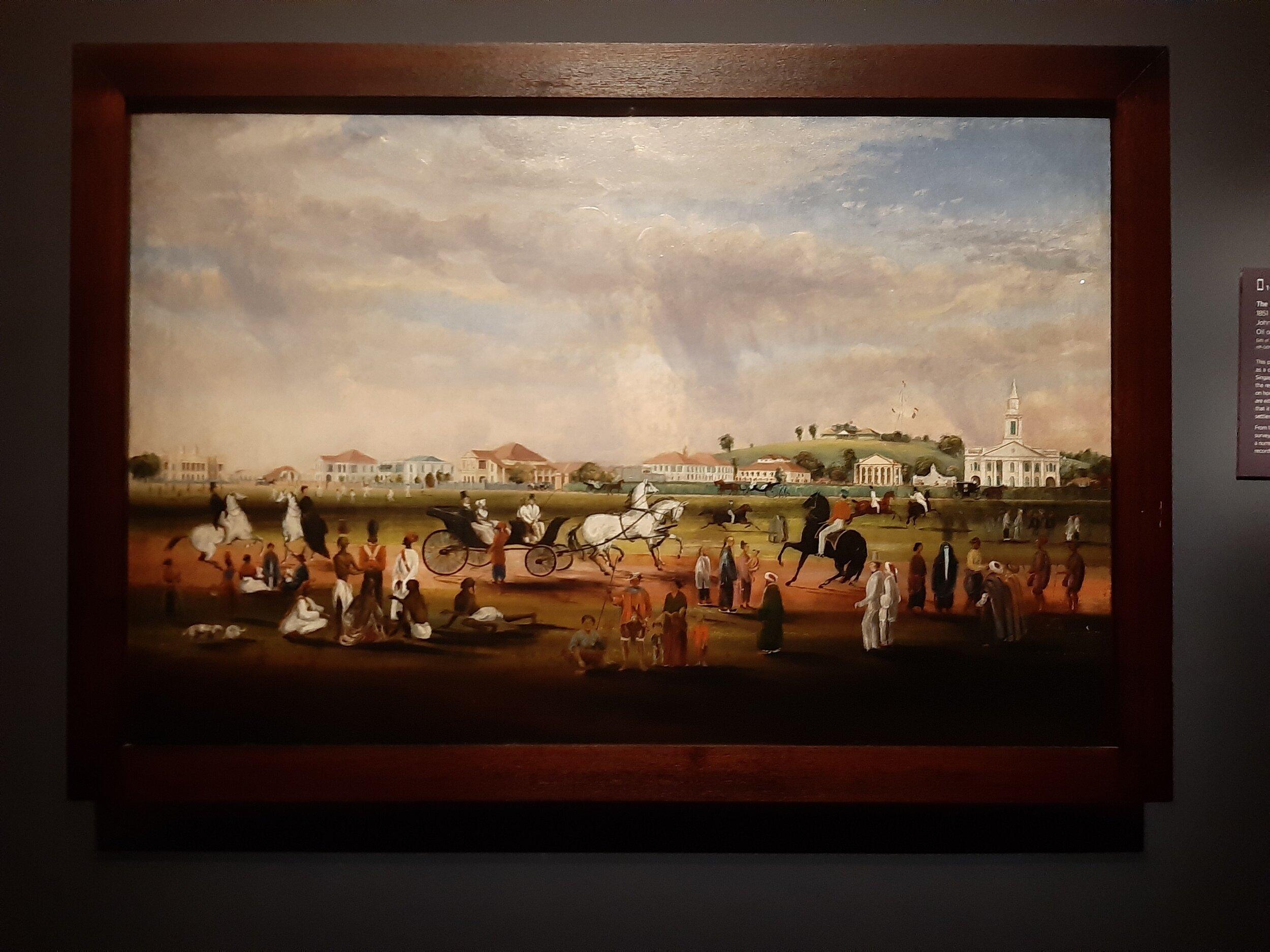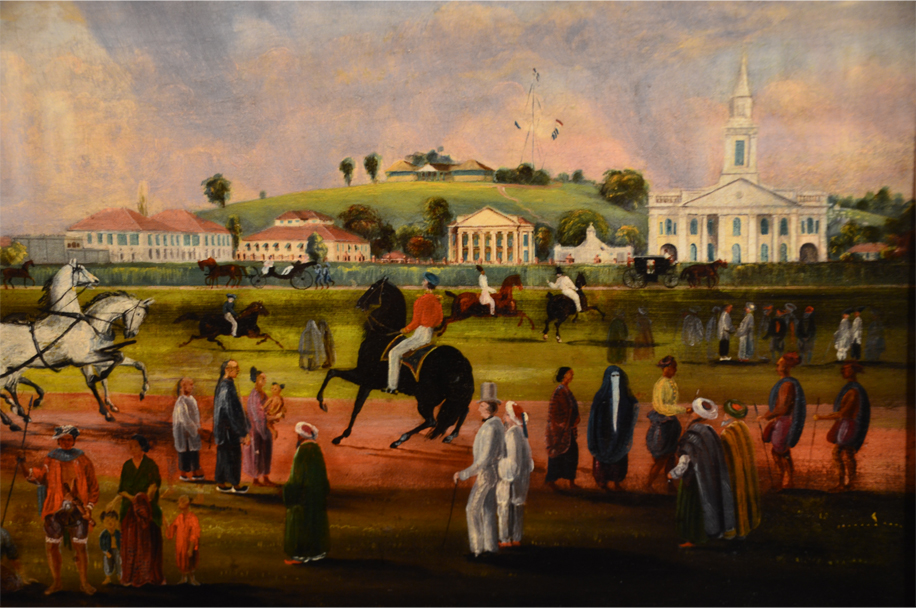The Esplanade at Scandal Point
Excerpt from By the Tale of the Dragonfly
This is an oil painting by John Turnbull Thomson, who served as the first government surveyor in Singapore from 1841 to 1853. A self-trained artist, he produced a number of paintings which have become an important record of the early settlement. This painting shows a view of the Padang (open square or field) from Scandal Point, the Saluting Battery (a small knoll above the original shoreline since levelled) situated at the edge of Connaught Drive, southeast of St. Andrew's Church (St. Andrew's Cathedral today). The Padang was the heart of social life in 19th century Singapore and is depicted here in its most bustling state in the late afternoon with different communities dressed in their respective costumes. The painting creates the impression that Singapore was an idyllic multicultural society. However, the representation of Europeans on an elevated plane— on horseback or in horse-drawn carriages—while Asians are either standing or seated on the field, subtly suggests that it was the Europeans who held the authority in the settlement.
John Turnbull Thomson’s painting now lies today in modern Singapore’s National Museum called The Esplanade from Scandal Point (1851). The painting was previously displayed at Raffles Museum which has now closed down. It depicts a story about that period of time when John Turnbull Thomson (1821-1884) was the Government Surveyor for the Eastern Settlements. His painting represents the residents of Singapore relaxing at the Padang, a Malay word for ‘flat field’. Singapore’s founder under the British was Sir Thomas Stamford Raffles (1781-1826). It was Raffles who wanted this padang to be reserved for recreational use. The painting also shows what the colonial part of Singapore town looked like during British rule in 1851. Scandal Point is a small hill at the edge of the Padang and most likely acquired its name over many years in part due to it being a news gathering place for the local gossip. The painting also shows a family group with the man holding a spear representing the orang laut or sea gypsies, some say maybe the original inhabitants of the island. The term Orang Laut in the literally sense means "Sea People", sea nomads and even sea gypsies. They were one of the earlier immigrants who settled along the coastline of Singapore island during pre-colonial days. The orang laut community typically lived off a long dwelling boat, known colloquially as sampan panjang, or "long boat".
The National Museum of Singapore is the oldest museum in Singapore, with its history dating back to 1849, when it was started as a section of a library at Singapore Institution originally called the Raffles Library and Museum. After several relocations, in 1887 it moved to its permanent site at Stamford Road in the Museum Planning Area. Between 1993 and March 2006, it was known as the Singapore History Museum; it was given its present name in 1965.

